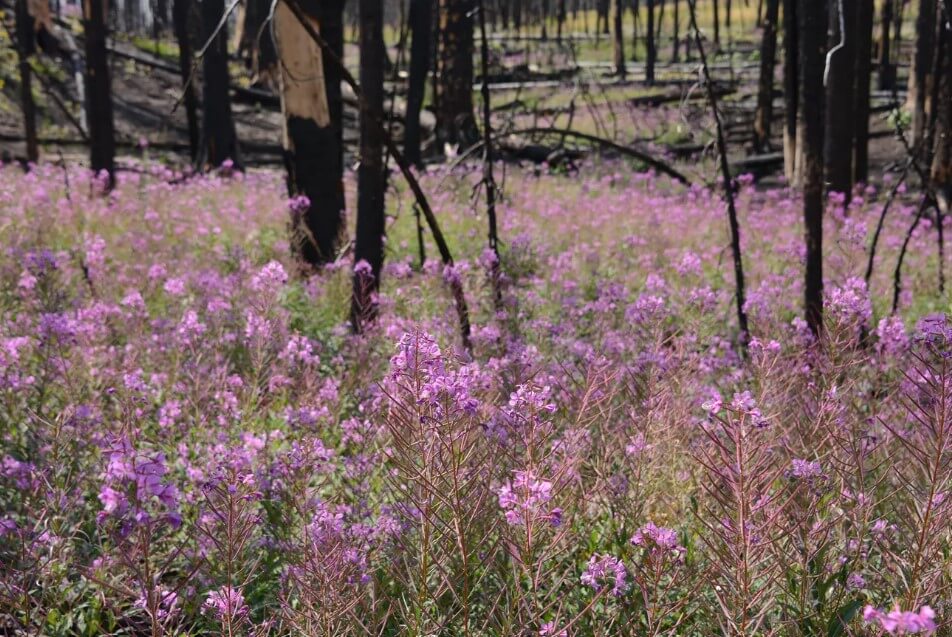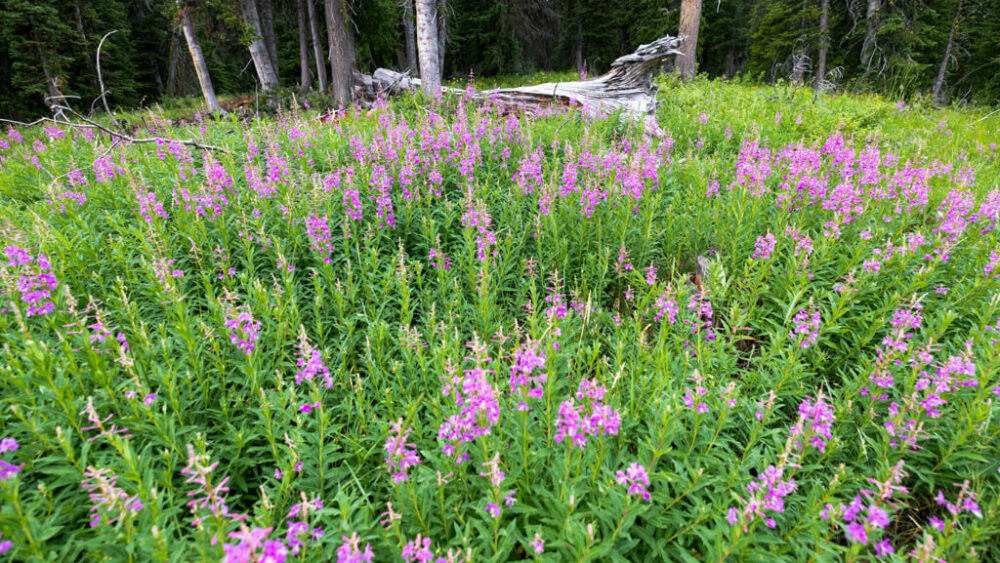by Abbey Thomas, Field Educator
As seasons come and go, changes occur. Human cultures have always documented the phenology of the natural world in detail. We wait enthusiastically for our favorite birds to arrive in the spring, indulge in the first ripened berries of late summer, watch for the turning colors of autumn, and prepare to slow down as the first snow falls. For many, the practice of observing these changes brings joy and a sense of connectedness to the natural world. In essence, the observation of phenology connects our present observations to traditional knowledge, cultivating our all-too-often forgotten relationship with the natural world.
 As September creeps in fireweed, Epilobium angustifolium, is in full bloom. Fireweed is named for the fact that it grows in soils that have been burned or disturbed. Fireweed starts growing early in the summer, staying small until July and then erupting in a sea of fuchsia blossoms lasting into September. Today many people enjoy the vibrant blooms, but not many people still utilize the medicinal properties of this incredible plant. Folk and tribal medicine both widely apply fireweed as an antispasmodic, used in treating conditions like asthma, whooping cough, and hiccups. The dried leaves can be used to soothe irritated mucus membranes. The timing of fireweed flowering coincides with peak hay fever season, and now increasingly wildfire smoke season. Wildfire season has historically started in late summer and continues into fall. As wildfires across the west become more frequent, people with conditions like asthma can benefit from the very plant that grows in the aftermath of wildfires! Understanding where to find fireweed and when to harvest is key (of course outside of Yellowstone National Park).
As September creeps in fireweed, Epilobium angustifolium, is in full bloom. Fireweed is named for the fact that it grows in soils that have been burned or disturbed. Fireweed starts growing early in the summer, staying small until July and then erupting in a sea of fuchsia blossoms lasting into September. Today many people enjoy the vibrant blooms, but not many people still utilize the medicinal properties of this incredible plant. Folk and tribal medicine both widely apply fireweed as an antispasmodic, used in treating conditions like asthma, whooping cough, and hiccups. The dried leaves can be used to soothe irritated mucus membranes. The timing of fireweed flowering coincides with peak hay fever season, and now increasingly wildfire smoke season. Wildfire season has historically started in late summer and continues into fall. As wildfires across the west become more frequent, people with conditions like asthma can benefit from the very plant that grows in the aftermath of wildfires! Understanding where to find fireweed and when to harvest is key (of course outside of Yellowstone National Park).
Blooming fireweed, and other phenology, help us observe and understand the ecosystems around us on an ecological level. By going one step further and trying to understand some of the greater context of why humans care about these observed changes, we gain more insight from our own observations. Human culture is cultivated by phenological observations, and phenology gains new value when we apply a cultural lens to our interactions with the natural world.
So next time you are out in nature observing ecological shifts that make up the seasons, ask yourself why is this an important thing? You may find a hidden story that brings a new layer of richness to your life and awareness.
Feature Image: Fireweed, NPS / Jacob W. Frank
Other: Fireweed, NPS / Danielle Lehle

Comments are closed.